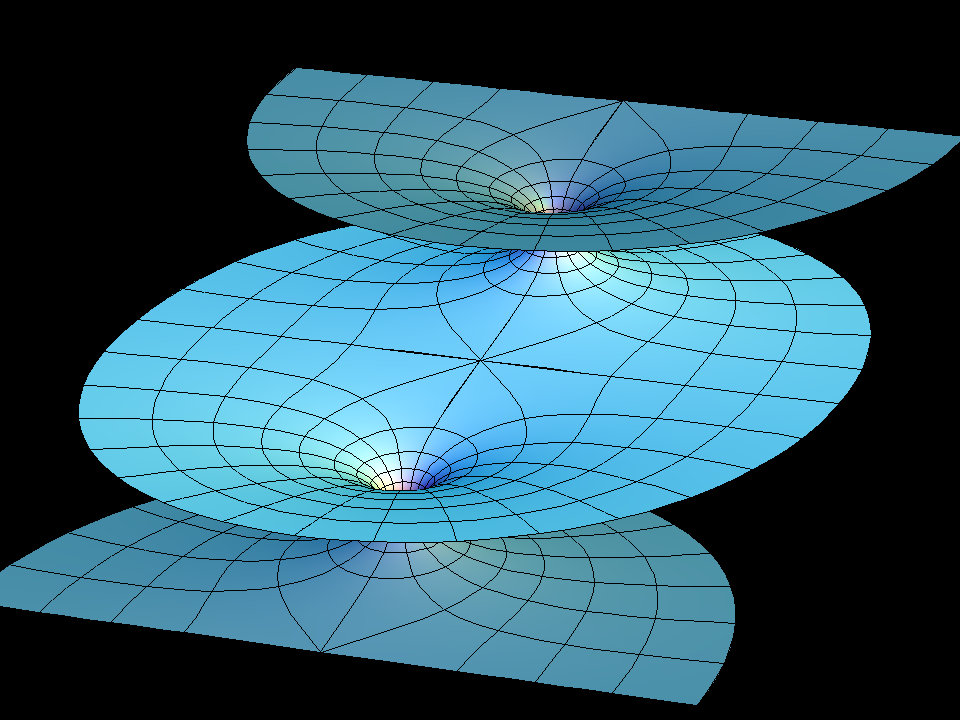

The Gauss maps of these famous surfaces are the similarly famous Weierstrass p-functions on rectangular tori. [see Elliptic Function: JE]
Compare the image with the image of the Lopez-Ros No-Go Theorem [see Lopez-Ros-No-Go surface]
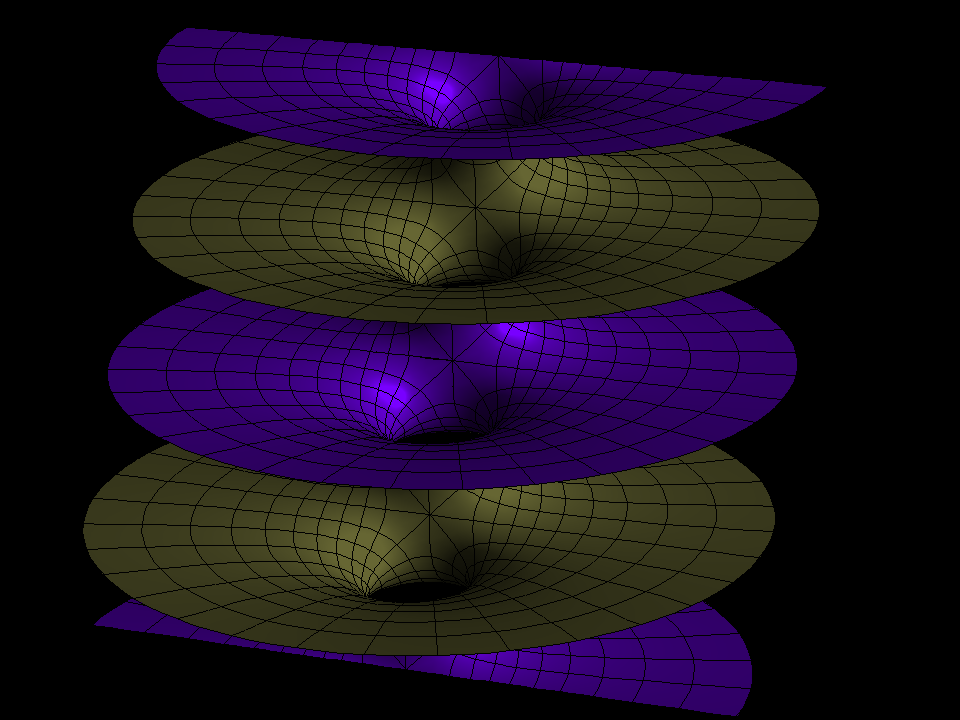
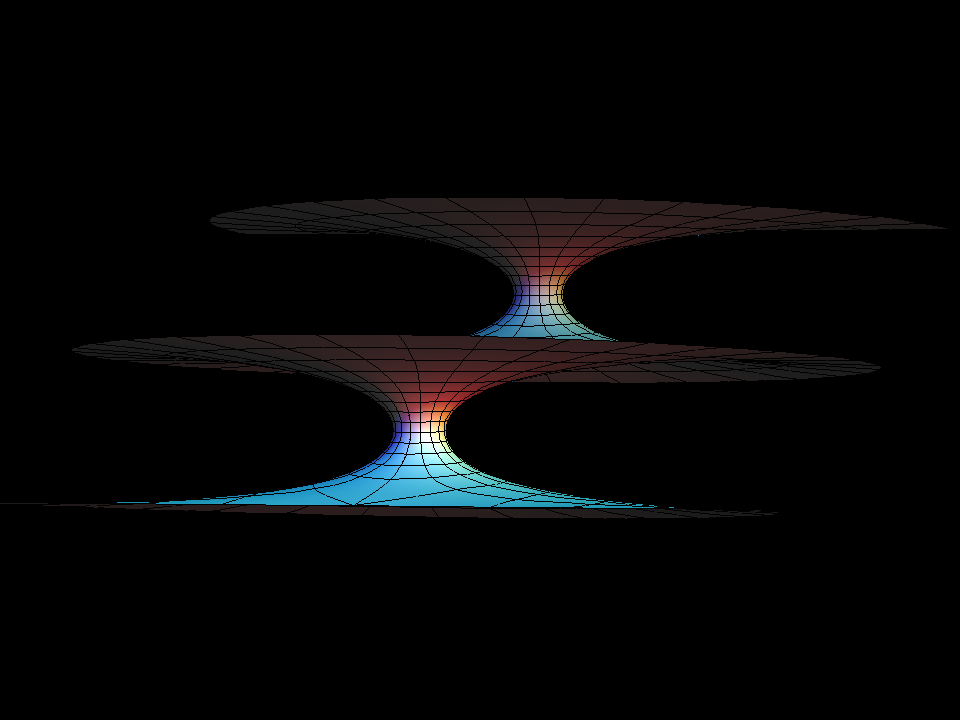
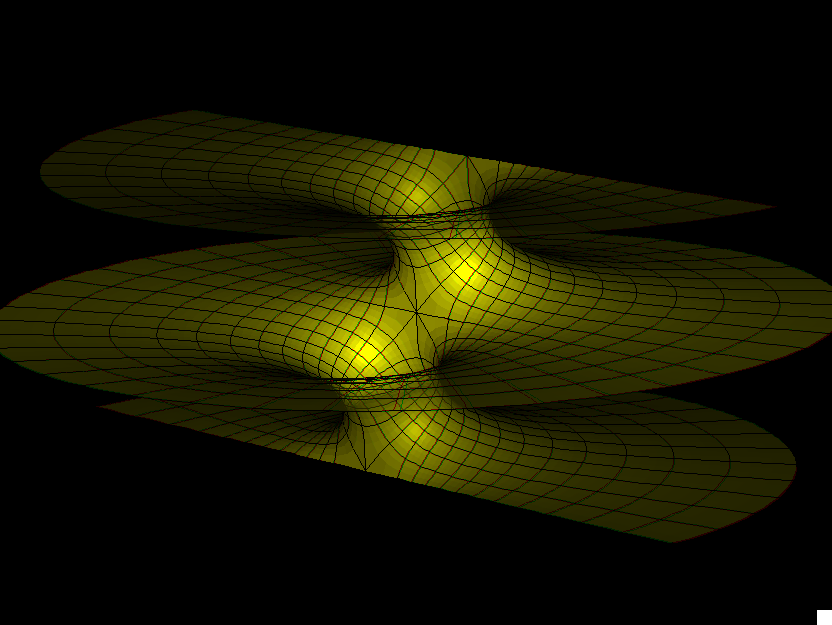
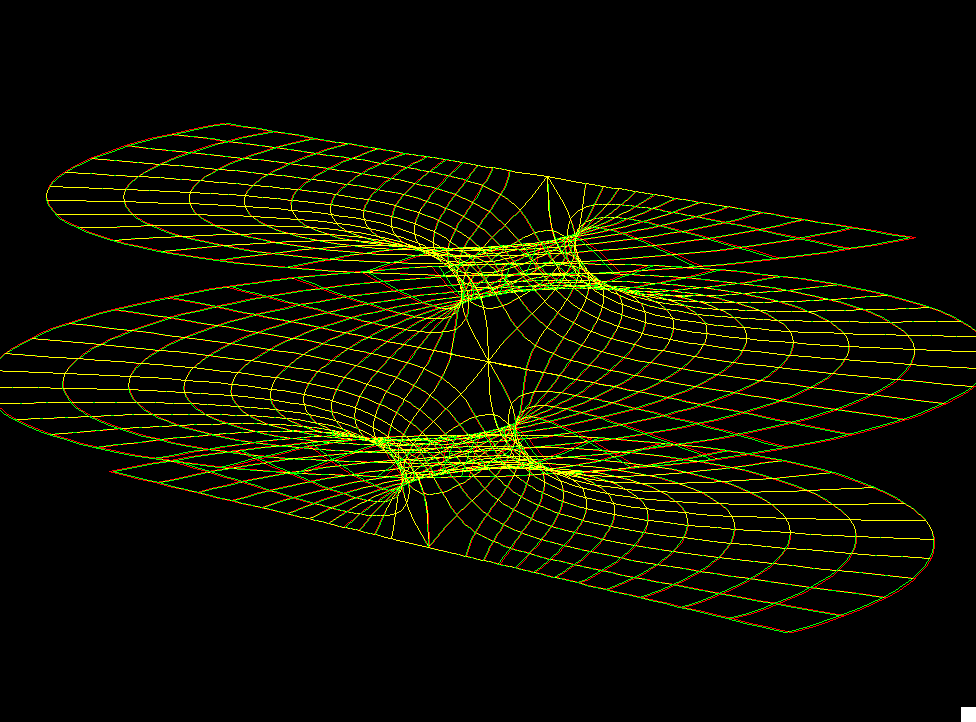
H. Karcher
This is the family of singly-periodic embedded minimal surfaces found by Riemann. They are parametrized (aa) by rectangular tori. The Gauss map is the Weierstrass pe function additively normalized to have a double zero at the branch point diagonally opposite the double pole and multiplicatively normalized to have the values plus or minus i at the four midpoints (on the Torus) between the zero and the pole. The minimal surface has rotational symmetries around the corresponding normals. This symmetry kills the horizontal periods. The surface is parametrized by the range of the Gauss map with polar coordinates around the punctures. The surfaces look like families of parallel planes with one handle between adjacent planes. The associate family morphing joins two such embedded surfaces - they are congruent for the square Torus. The standard morphing (aa) changes the branch values of the Gauss map, i.e. the tilt of the normal at the flat points (K=0).
For a discussion of techniques for creating minimal surfaces with various qualitative features by appropriate choices of Weierstrass data, see either [KWH], or pages 192--217 of [DHKW].